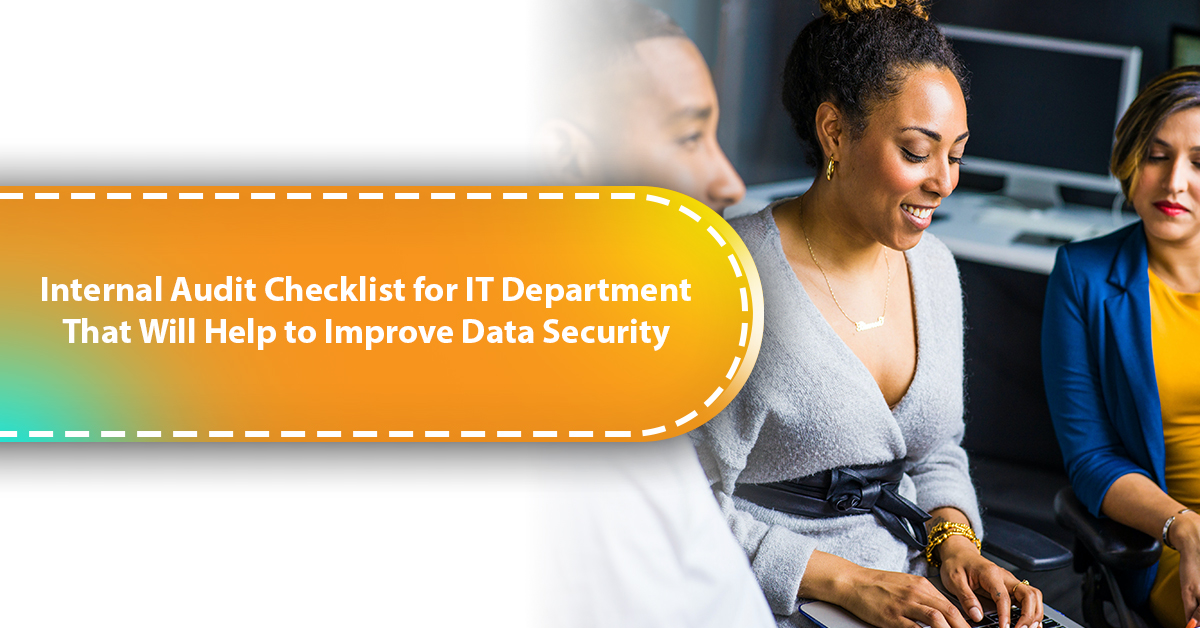
Organisations, regardless of the size, nature of business, or operations need to be careful about information security risks and IT failures. Any breach of security or loss of data can cost time as well as money for the business, which it may or may not be able to recover.
If your organisation has a dedicated Information Security Management System (ISMS), it will help you eliminate or mitigate the risks. IT and cybersecurity risks are not only increasing every day, but they are also changing continuously. While it might be hard to keep your business always prepared for any new risks, an internal audit will help. It is a thorough evaluation of your ISMS framework and security controls at a periodic interval. So, an internal audit will decide whether your ISMS and security controls are effective at addressing the current risks. This blog provides an internal audit checklist for IT departments of organisations. They need to follow the checklist every time to conduct the audit in a most effective way.
If you are always keen on protecting your organisation’s IT devices and information assets from any vulnerabilities, this checklist is going to work for you.
Before you jump into the steps of the checklist, you must know what the audit process should comprise. In other words, you need to learn about the key aspects covered by the checklist that define the scope of internal audit.
The audit should cover:
• The ISMS (Information Security Management System) implemented in your organisation
• Compliance will applicable data protection laws and regulations
• Compliance with international information security standards like ISO 27001
• IT devices/IT infrastructure of your organisation
• Data backup system
Now, these are the steps that the IT department of your organisation should follow to conduct an internal audit of your information security framework.
The IT department first needs to review the documents that were created for the ISMS. It includes the scope, information security policy and objectives, risk assessment methods, risk treatment plans, and so on.
A thorough evaluation of the documents of ISMS will help the department know whether everything that is written is followed or implemented in practice. In that way, you will be able to find the discrepancy in your current information security capabilities.
Following the documentation review, you should start with the proper audit procedure i.e., an on-site review of the ISMS. At this stage, the officials from the IT department will walk through the organisation and look at every IT and information security aspect. They will observe whether practices of the ISMS are enforced, and the proposed objectives are achieved. They will interview a few employees who are directly associated with the ISMS or work with it.
Along with that, they will identify the gaps in the ISMS against the ISO 27001 that must be closed by your organisation as soon as possible with corrective measures.
The members of the IT department will then need to create a comprehensive and clear audit report. The report should present their unbiased observations from the audit which shall include the shortcomings, slackness, and nonconformities in the ISMS. In the report, they should also provide recommendations or necessary preventive/corrective actions for rectifying each of the issues.
If the members have faced any limitations while conducting the audit, they should mention them in the report so that you can make sure they do not reoccur next time.
The IT department then should present the report to the top-level management of your organisation in a closed-door meeting. It may include the interested parties i.e., agents, partners, or individuals who are affected or benefitted by your ISMS. The management team will review the findings and actions recommended by the IT department. Upon reviewing the report, the team will decide to commit to implementing the required actions.
Internal audit is a valid practice for checking the efficiency of your IT infrastructure that includes the ISMS framework. That is why it is essential for achieving ISO 27001 compliance. It will help you to affirm whether the requirements of the ISO standard are met by your organisation’s ISMS.
When your IT department performs the audit effectively at regular intervals, it will ensure:
• The data security practices and controls are implemented appropriately
• The scope of the ISMS is aligned with your information security goals
• The requirements of the ISO standard are met
• The data security risks are identified and mitigated/prevented with appropriate actions
• The data of your business are well protected and thereby, reliable and valid
We have provided the internal audit checklist for IT department which can help you do the audit appropriately and ensure these above results.
If you need any assistance to prepare for the internal audit or need an external team to conduct it in your behalf, Compliancehelp is right here! Our experts will do a high-level audit or guide you in it to find problems or nonconformities in your ISMS and fix them. Feel free to get in touch!

Get connected with us on social networks!